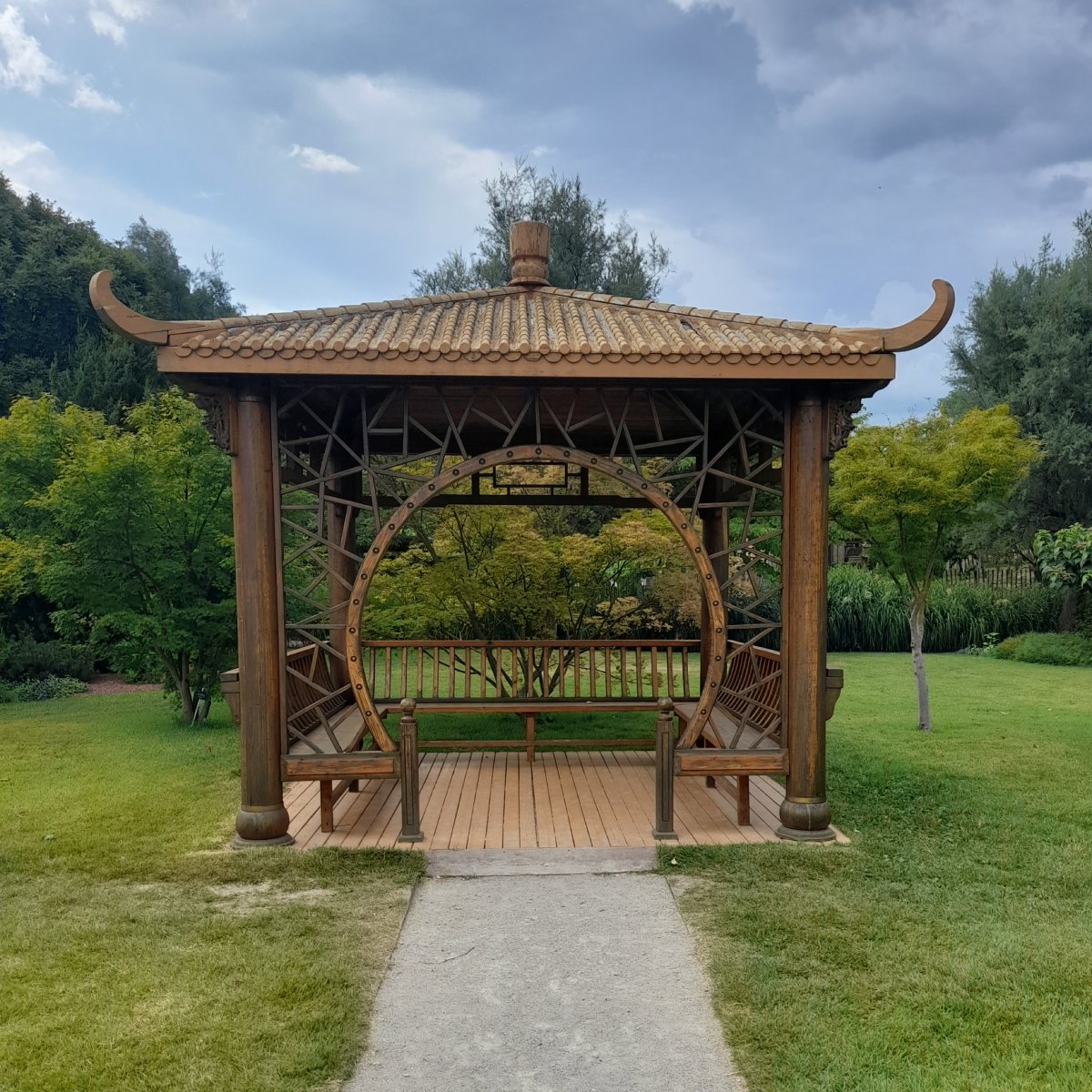articles
China Elevator Stories
2025: The Chinese Year of the Snake
Today marks the first day of the Chinese Year of the Snake.
29/01/2025

Ruth Silbermayr
Author

Today (29 January 2025) marks the first day of the Chinese Year of the Snake.
In Western countries, snakes often carry negative connotations. Think of the serpent in the Old Testament, which led Eve and Adam astray so that they would “eat the forbidden fruit in the Garden of Eden” (the fruit God had forbidden them to eat). In the Old Testament, the serpent represents the devil. This action led to Adam and Eve being banished from the Garden of Eden and punished by God for eating the fruit. It was the serpent that had told them to try the fruit, which they eventually did. As a result, they were expelled from paradise and forced to live a much less enjoyable human existence than the one they had previously known in the Garden of Eden.
Another famous story featuring a snake is Harry Potter. Voldemort had a snake called Nagini, with whom he could communicate and give orders. Nagini was a dreadful snake (one that gave me many nightmares when I read Harry Potter in my teens) and could kill Voldemort’s enemies. During my teenage years, I often found myself locked in my room on weekends, an English copy of Harry Potter in hand, reading for hours without taking a break. I could spend entire days immersed in books, and the Harry Potter series was one of my favorites.
In Austria, we don’t have much to fear from snakes. In Upper Austria, where I was born, only non-venomous snakes are native to the area, and they weren’t a common sight (they were more commonly seen in zoos than in the wild). I grew up in the countryside, and while we learned about non-venomous snakes at school and knew they existed, I never encountered a single snake outdoors while living in Austria.

In China, snakes are often kept in restaurants and are considered a delicacy in certain regions. I attended a summer school in Shaoxing, Zhejiang province, in 2008 (not far from Shanghai), where snake meat was a local delicacy. One day, our group of students tried snake, and the taste wasn’t bad. It’s not a delicacy I feel the need to try again, as I dread snakes, but for the record: the taste was rather bland and nothing to be afraid of. People often say it tastes like chicken, but I would describe it as tasting like chicken without the chicken flavor—tasting even more bland.
In Chinese restaurants, animals are often kept in cages, terrariums, or aquariums, and this restaurant was no exception. Right by the entrance, a few aquariums and terrariums housed animals that could be chosen for consumption. One terrarium contained several snakes. Sometimes, the staff selects the animals, but most of the time, customers can point to the animal they want to eat.
On this particular day, our teacher took us to this restaurant to try a variety of Chinese dishes, including snake. Before the snake was prepared, we watched an employee behead it in the kitchen. He held the snake straight and then swiftly beheaded it with a sharp knife. The snake was later served sautéed, accompanied by a cup of snake bile in alcohol. The bile was a green liquid, and as far as I could tell, it had been added to the alcohol raw. None of my Austrian friends were brave enough to try it, but when we left the restaurant, the glass was empty. A Chinese student who had joined us had drunk the bile. As far as we knew, she was vegetarian, but snake bile is considered too precious to be wasted in China.
Slaughtering an animal right before cooking is believed to keep the meat fresh and of higher quality. Many Chinese people consider our method of storing meat for long periods to be inferior, viewing it as having “low Qi” or “dead Qi”—energetically depleted due to bad storage or freezing. They believe that fresh preparation retains more Qi (气), which is essential for maintaining one’s own Qi. Chinese cuisine often incorporates the concept of Qi; for example, food that is cooked for a long time, such as congee, is said to provide more Qi, while fresh produce is considered to have more Qi than vegetables that have been stored for a long time.
Chinese cuisine is incredibly diverse and is one of the most renowned globally. While not everyone may like the idea of eating snakes, turtles, edible insects, frogs, or dogs, more familiar meats and dishes are also widely available. Snake is not a dish eaten all across China; it is only common in certain areas.
Snakes are also used by elderly Chinese people—they can be found whole in bottles of Chinese schnapps and are said to help with male fertility. Because a snake has the shape of a phallus, it is believed to have effects similar to Viagra (among other positive side effects). Snakes are said to possess certain medicinal properties. When preparing snake alcoholic beverages, a whole snake is steeped in rice wine or grain alcohol and then placed in the bottle with the alcohol. This way, when you buy the alcohol, you can see the snake inside the bottle. This beverage is known as snake wine (蛇酒) and is common in areas such as Zhejiang but not in places like Jilin province (where you’ll more commonly find Korean ginseng in bottles of Chinese schnapps). Snake wine is also common in other Asian countries such as Vietnam and Thailand. In Vietnam, cobras or kraits are commonly used for snake wine. In China, cobras or vipers are commonly used.
I didn’t encounter any wild snakes when I traveled through China in the years that followed (I traveled to many places in the Chinese countryside, including Yunnan, Guangxi, and Sichuan provinces), except for once when I was living in Siping in Jilin province in Northeast China.
My university had organized a trip to the nearby countryside near Yehe, the town where Empress Dowager Cixi’s ancestors originated. Cixi was a member of the Yehe-Nara clan, which inhabited the Yehe state around the Yehe River, not far from today’s Siping. Not much remains from that time, but there is a small hill next to the roadside that can be visited on the way from Yehe to Siping, where, I believe, the Yehe-Nara clan lived. There is also a small complex of buildings (called Yehe Ancient City) where visitors can see how Cixi’s ancestors lived. Is it worth visiting? Not really. The building complex was reconstructed in 1994 to show how Cixi’s family lived, so it is not a real ancient town. The hill is also not noteworthy unless you are an archaeology fan.
During the university trip, all foreign teachers were invited, and I went with my children. One morning, while walking around the hotel in the countryside, we encountered huge black snakes in almost all the bushes near the entrance. I quickly made sure to leave the area, as they were so large they could have easily eaten my children whole for breakfast—just kidding. But they certainly didn’t look like non-venomous snakes.

The university had organized trips to Yehe in previous years, and I always joined, seeing them as a great opportunity to spend a day or two in the Chinese countryside near Siping. I also enjoyed taking my children, who were mostly used to city life, to the countryside for walks and time outdoors. I had never encountered any snakes before and didn’t know that huge black snakes inhabited the area.
In certain areas in China, finding a snake in your garden is not considered a bad omen but rather a sign of good fortune.
In the Chinese zodiac, the snake is the 6th zodiac animal. The twelve zodiac animals follow a fixed order, beginning with the Rat. The Chinese zodiac animals are as follows: Rat, Ox, Tiger, Rabbit, Dragon, Snake, Horse, Sheep, Monkey, Rooster, Dog, and Pig. I was born in the Year of the Rabbit, while my children were born in the Year of the Horse (2014) and the Year of the Monkey (2016). While I am not certain whether children born in specific years possess particular inborn characteristics, my younger son, born in 2016, certainly reminded me of a little monkey—he loved climbing sofas, people, or any object he could find, and he ran around like a little monkey as well and was nimble and skillful.
Children born in the Year of the Snake are said to exhibit certain personality traits associated with this zodiac animal. Snakes, for example, are believed to be among the most intelligent animals in the Chinese zodiac. They are thought to be analytical thinkers with sharp minds who carefully consider their decisions rather than acting impulsively.
In relationships, people born in the Year of the Snake are said to be selective about whom they spend time with. They are thought to choose their relationships carefully, preferring those in which they share an intellectual connection over those where they do not.
In the workplace, people born in the Year of the Snake are believed to favor positions that allow them to use their intellect and analytical skills. They are said to have a tendency to become philosophers, intellectuals, or work in fields requiring introspective qualities and deep thinking, as well as roles that involve careful planning and calculated actions.
The following years were Years of the Snake: 1977, 1989, 2001, and 2013.
2025 marks another Year of the Snake—the Year of the Wood Snake. The year 2013, which was the year after I moved to China, was a Year of the Water Snake (with water referring to one of the five elements, not to a “water snake” that lives in the sea). These elements influence how a particular year is believed to unfold. For example, Chinese zodiac animals governed by the element of water in a given year are said to have different traits than those governed by the element of wood.
A person born in the Year of the Water Snake is believed to be intuitive, perceptive, imaginative, insightful, and emotional. A person born in the Year of the Wood Snake is said to be curious and open-minded, with an interest in new ideas. This type of snake is thought to be not only strategic but also imaginative and inclined to think outside the box. People born in a Year of the Fire Snake are said to be passionate and charismatic, possessing an energy that naturally draws others in. However, they can also be impulsive. A person born in the Year of the Earth Snake is believed to be strategic, focused on concrete goals and long-term success, carefully planning their actions, and maintaining a steady nature (this reminds me of people with Earth as their dominant element in Carol Tuttle’s personality system called “The 4 Types”).
The Year of the Wood Snake in 2025 is expected to bring growth opportunities and transformation to the world.
After 2025, the next Year of the Snake will be in 12 years, completing a full zodiac cycle. It will occur in 2037 and will be a Year of the Fire Snake.
Just like in Western astrology, certain Chinese zodiac animals are believed to be more compatible in romantic relationships than others. When I met my Chinese ex-husband in 2012, who was born in 1981 (the Year of the Rooster), his mother told him that a woman born in the Year of the Ox would be a more suitable match, but a woman born in the Year of the Rabbit was still an acceptable choice.
For Chinese New Year, families gather to celebrate the end of the year and welcome the new one, usually with a family dinner on New Year’s Eve, enjoying dumplings and other festive dishes. They often also celebrate by drinking alcohol, and many people watch the CMG New Year’s Gala (春晚) together.
On New Year’s Day, we would also gather to eat dumplings. My former in-laws prepared dumplings with coins inside, and the person who found the most coins in their dumplings was said to become the highest earner in the coming year.
Happy Chinese New Year!